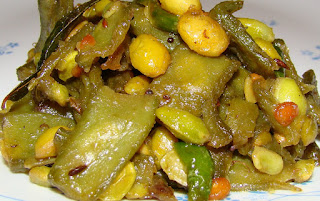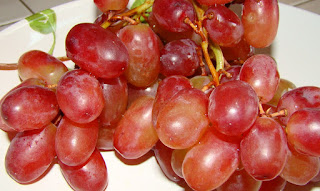

Commonly eaten fruit, bananas are a non-seasonal crop; they are available fresh year round.
Since bananas are picked off the tree while they're still green, base your choice of bananas depending upon when you want to consume them. Bananas with more green coloration will take longer to ripen than those more yellow in hue and/or with brown spots.
Bananas should be firm, but not too hard, bright in appearance, and free from bruises or other injuries. Their stems and tips should be intact. The size of the banana does not affect its quality, so simply choose the size that best meets your needs.
They should be left to ripen at room temperature. If you need to hasten the ripening process, you can place bananas in a paper bag or wrap them in newspaper, adding an apple to accelerate the process.
Unripe bananas should not be placed in the refrigerator as this will interrupt the ripening process to such an extent that it will not be able to resume even if the bananas are returned to room temperature. Ripe bananas that will not be consumed for a few days can be placed in the refrigerator. While their peel may darken, the flesh will not be affected. For maximum flavor when consuming refrigerated bananas, remove them from the refrigerator and allow them to come back to room temperature.
Bananas are classified either as dessert bananas (meaning they are yellow and fully ripe when eaten) or as green cooking bananas common called plantains. Cooking bananas are very similar to potatoes in how they are used. Both can be fried, boiled, baked or chipped and have similar taste and texture when served.
In addition to the fruit, the flower of the banana plant (also known as banana blossom or banana heart) the bark of the plant are also edible. They are used in making curries and stews.
The leaves of the banana plant are large, flexible, and waterproof. They are used to wrap food for cooking or storage. Banana leaves are also used to serve food.
Banana chips are a snack produced from dehydrated or fried banana or plantain slices.
In addition to being eaten raw, bananas are a wonderful addition to a variety of recipes from salads to baked goods.
A peanut butter and banana sandwich drizzled with honey is an all-time favorite comfort food for children and adults.
Add chopped bananas, walnuts and maple syrup to oatmeal or porridge.
In Japan, the banana plant has long been a source of fiber for high quality textiles.
The depiction of a person slipping on a banana peel has been a staple of physical comedy for generations.
Nutritional ProfileBananas are a very good source of vitamin B6 and a good source of vitamin C, potassium, dietary fiber, and manganese.





















